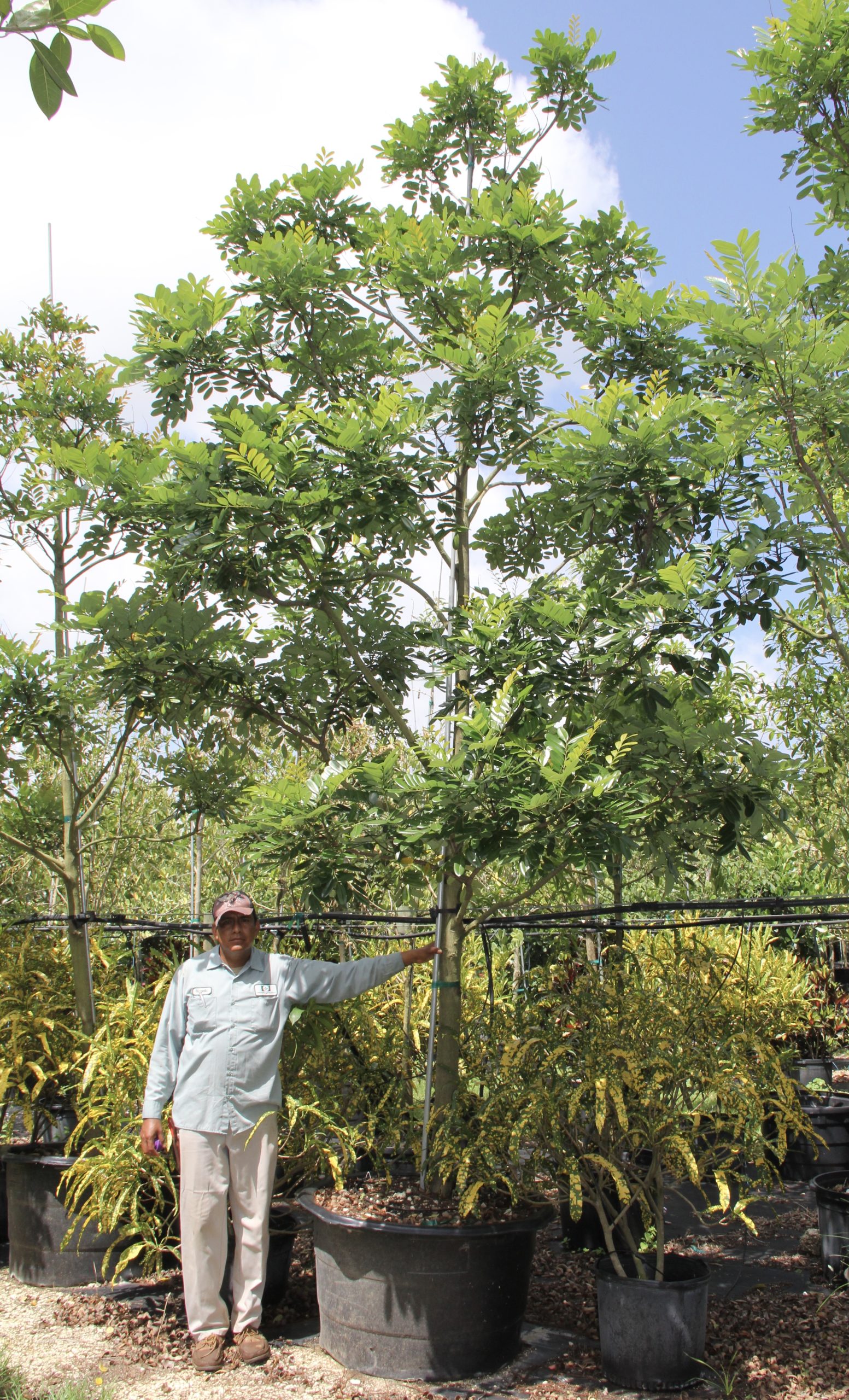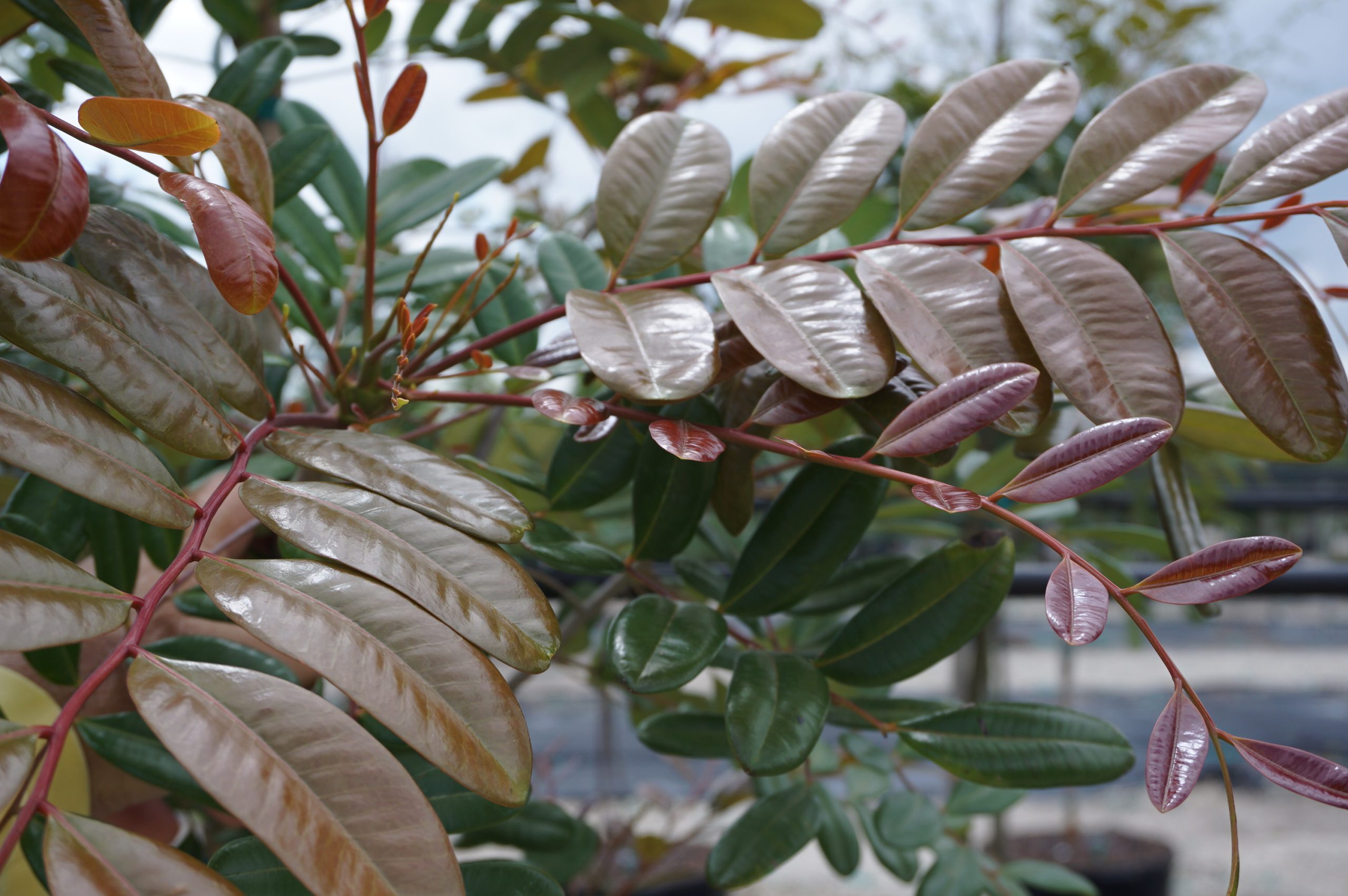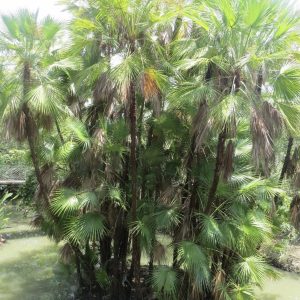Description
Paradise tree plant description
Simarouba glauca (Paradise tree) is a large Florida native plant which reaches 50 feet in height and a spread of 30 feet; the crown is dense and with an upright, erect, round shape and drooping branches. The trunk has light brown to grayish bark; smooth when young but becoming rough and flaky with age. Leaves are green, alternate, entire, pinnate compound, up to 16 inches long with multiple leaflets which are oblong, leathery, shiny, reddish when young 2 – 4 inches long.
Simarouba glauca fruits and cultivation
Flowers are tiny, inconspicuous, yellow to creamy white, borne in clusters; male and female flowers on different plants. Furthermore, the fruits also in clusters, oval to elongated, 1/2 – 1 inch long, bright red maturing to black. Fruits are edible, seeds contain an edible oil and the tree is propagated from seed. Leaves and bark are used in herbal medicine. The wood is close-grain, but soft and weak. Simarouba glauca (Paradise tree) can be grown in a range of well-drained soils and is a strong tree resistant to hurricanes and has no serious pest or disease problems.
In landscaping, it is attractive for its leaf texture and color as well as for its purplish fruits. It is highly suitable as a specimen or shade tree on a lawn or in a park, in residential and commercial situations and in a native tree garden. The shallow root system may cause problems to sidewalks, and fruit drop is messy.
Other names: Dysentery-bark and bitterwood
🌳More popular and beautiful plants: Japanese Blueberry









